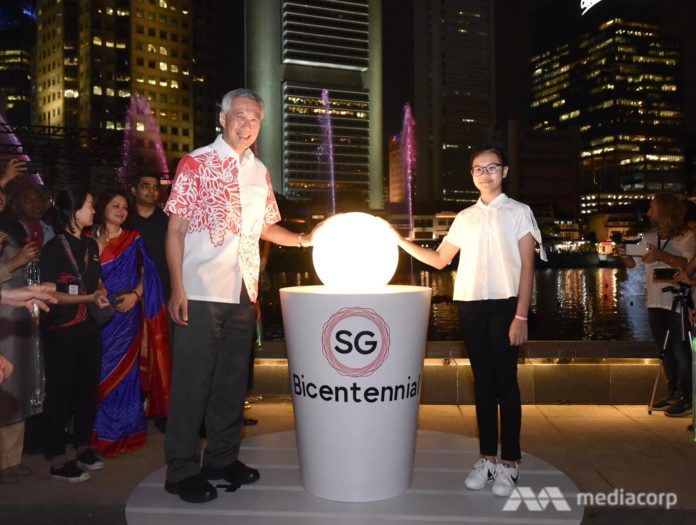SINGAPORE: As Singapore commemorates 200 years since Sir Stamford Raffles landed on its shores, Singaporeans should also think of how the country can move forward together, Prime Minister Lee Hsien Loong said on Monday (Jan 28).
“For we are never done building Singapore. It is every generation’s duty to keep on building, for our children, and for our future,” Mr Lee said.
“So that in another 50 or 100 years, Singaporeans not yet born will have a richer and greater Singapore Story to tell, and one that we will have helped to write together.”
Mr Lee said this at the launch of the Singapore Bicentennial where he will tour the exhibits from i Light Singapore, the Light to Night Festival and test out BALIKSG, an app for an augmented-reality trail that lets users revisit historical events.
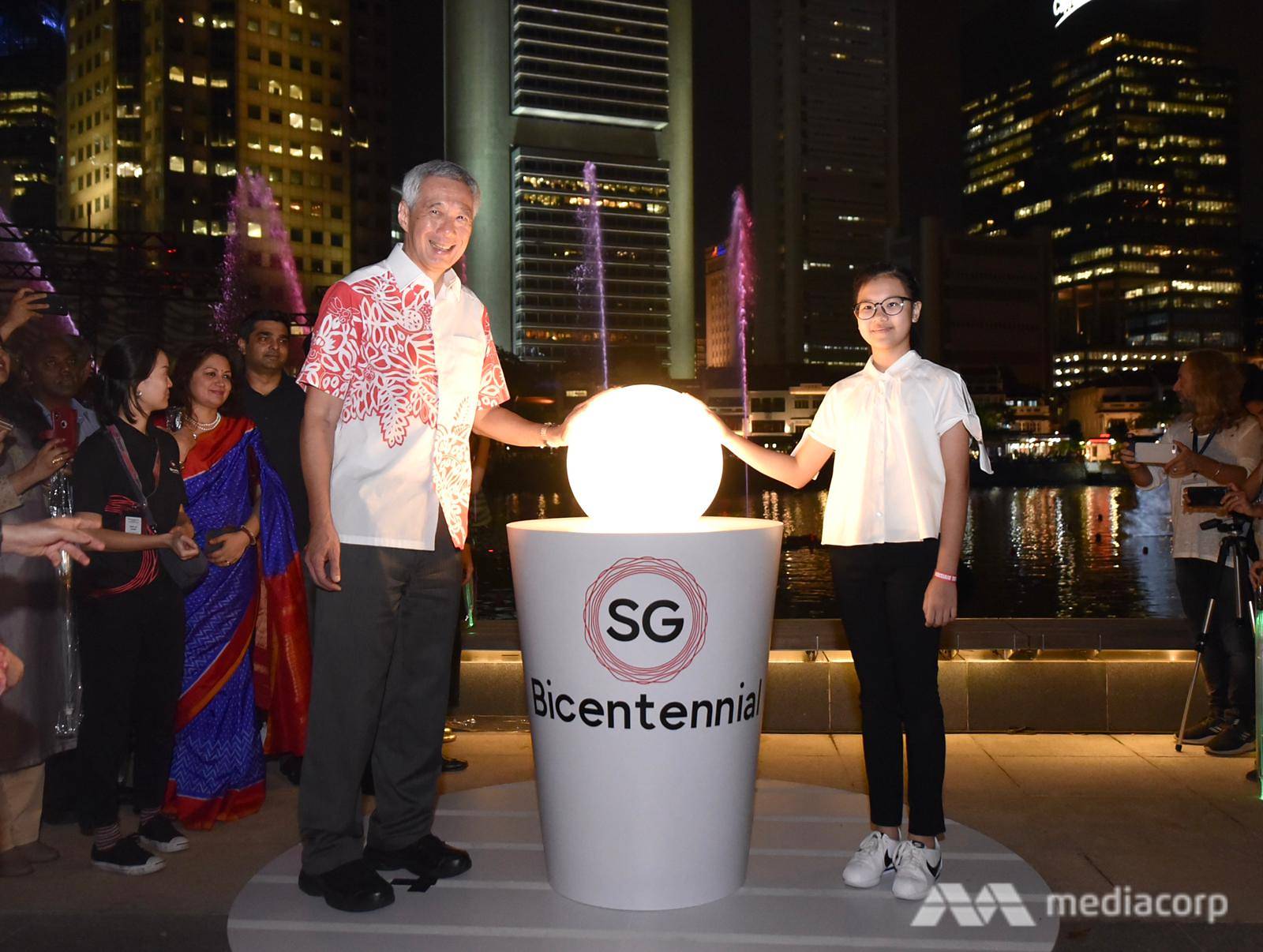
Prime Minister Lee Hsien Loong launches the Singapore Bicentennial with the youngest participant 11-year-old Kayla Choy. (Photo: Jeremy Long)
READ: Light installations, augmented reality trail to kick off Singapore Bicentennial
While the bicentennial commemorates 200 years since Raffles came to Singapore, Singapore’s history goes back hundreds of years before his arrival, Mr Lee said.
In the 14th century, the area right at the mouth of the Singapore River was a thriving seaport called Temasek. Around this period, Sang Nila Utama founded Singapura as a kingdom, Mr Lee added.
In the 16th and 17th century, the Europeans came to Southeast Asia and Singapore almost became a Spanish colony, Mr Lee said.
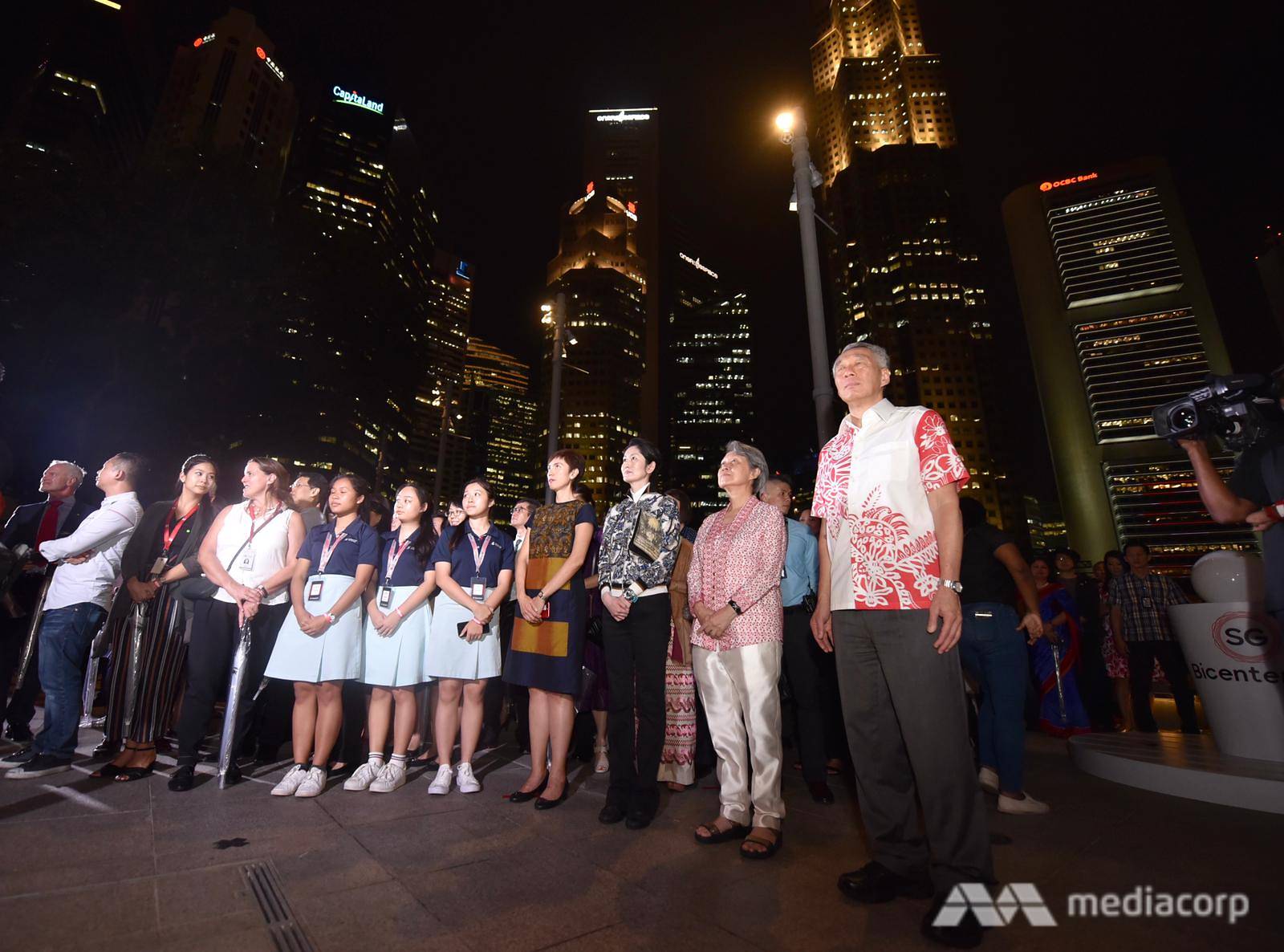
Prime Minister Lee Hsien Loong and his wife Ho Ching attend the launch of the Singapore Bicentennial on Monday (Jan 28). (Photo: Jeremy Long)
READ: Sang Nila Utama, pioneers join Stamford Raffles along Singapore River
“It took another 200 years before Raffles landed at a spot near here, and persuaded the Sultan of Johor to allow the British East India Company to establish a trading post in Singapore,” he said.
This became a “crucial turning point” in Singapore’s history and set Singapore on a trajectory leading to where it is today – a modern, outward-looking and multicultural society, he said.
When Raffles made Singapore a free port, the colony prospered and grew rapidly, attracting immigrants from Southeast Asia, China, India and beyond, Mr Lee said.
“Trade was our life blood. It linked us to the archipelago around us, and to the world beyond.”
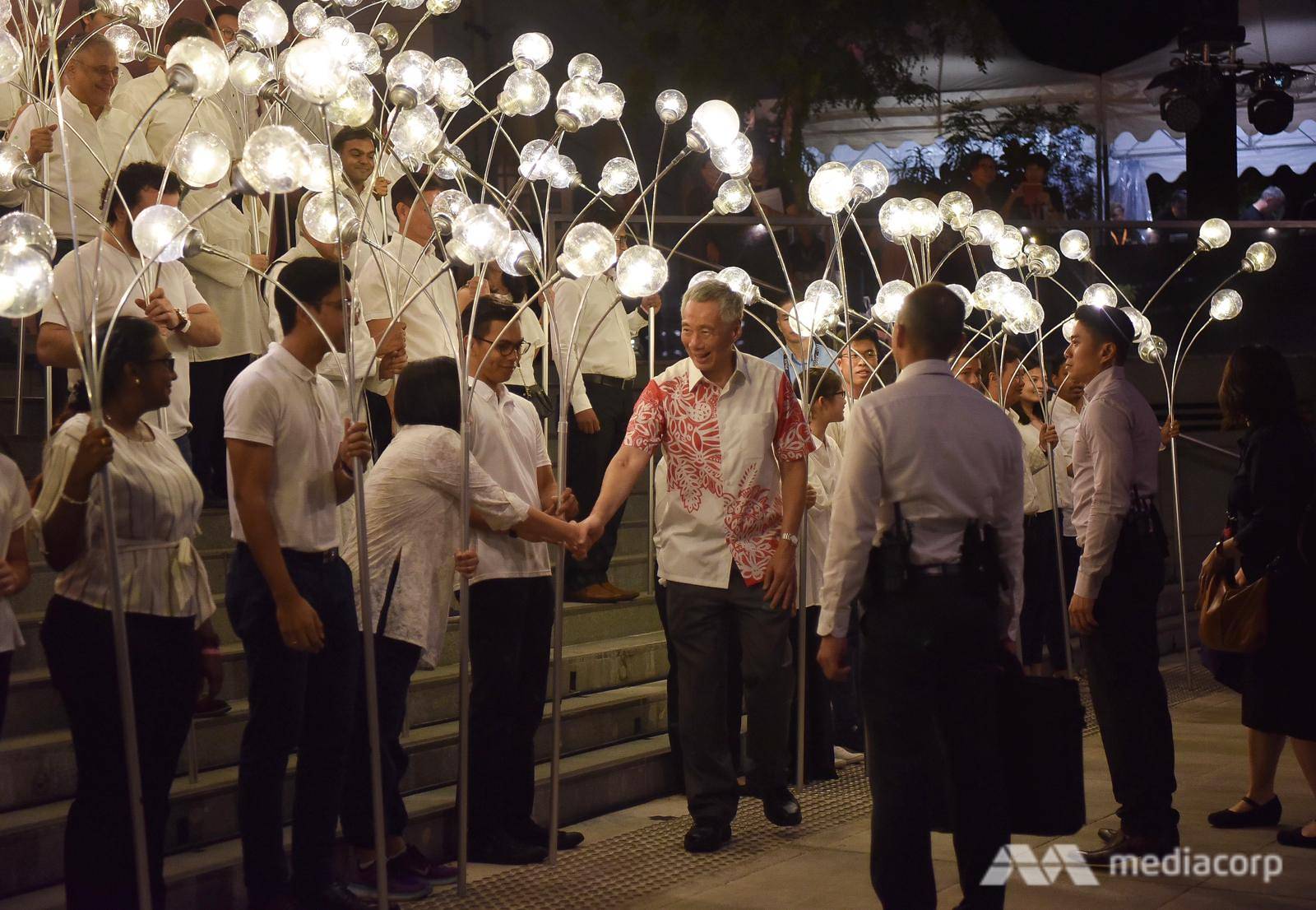
Prime Minister Lee Hsien Loong greets participants at the launch of the Singapore Bicentennial. (Photo: Jeremy Long)
READ: Bicentennial Edition of i Light Singapore to have 5 festival hubs
Mr Lee added that the impact of important historical events such as the Singapore and Malaysia merger in 1963 and eventual separation in 1965 was also influenced by the British’s arrival in 1819.
“Throughout the colonial period, Singapore was never governed as part of Malaya. … Over the next 150 years, our political values, inter-communal relations, and worldviews had diverged from the society on the other side of the Causeway,” Mr Lee said.
“At the same time, this history since 1819 explains why after separation, Singapore not only survived but thrived,” he added.

The Bicentennial Edition of i Light Singapore will have five festival hubs. (Photo: Jeremy Long)
READ: Google marks Singapore Bicentennial with special Doodle
Hence, Mr Lee said, the Singapore Bicentennial is “worth commemorating”. It is not just remembering Raffles or Singapore’s first Resident, William Farquhar, but tracing and reflecting upon Singapore’s longer history before 1965, he said.
“Without 1819, we may never have launched on the path to nationhood as we know it today. Without 1819, we would not have 1965, and we would certainly not have celebrated the success of SG50,” Mr Lee said.
There are activities and events planned throughout the year as part of the Bicentennial to explore Singapore’s history before 1965.
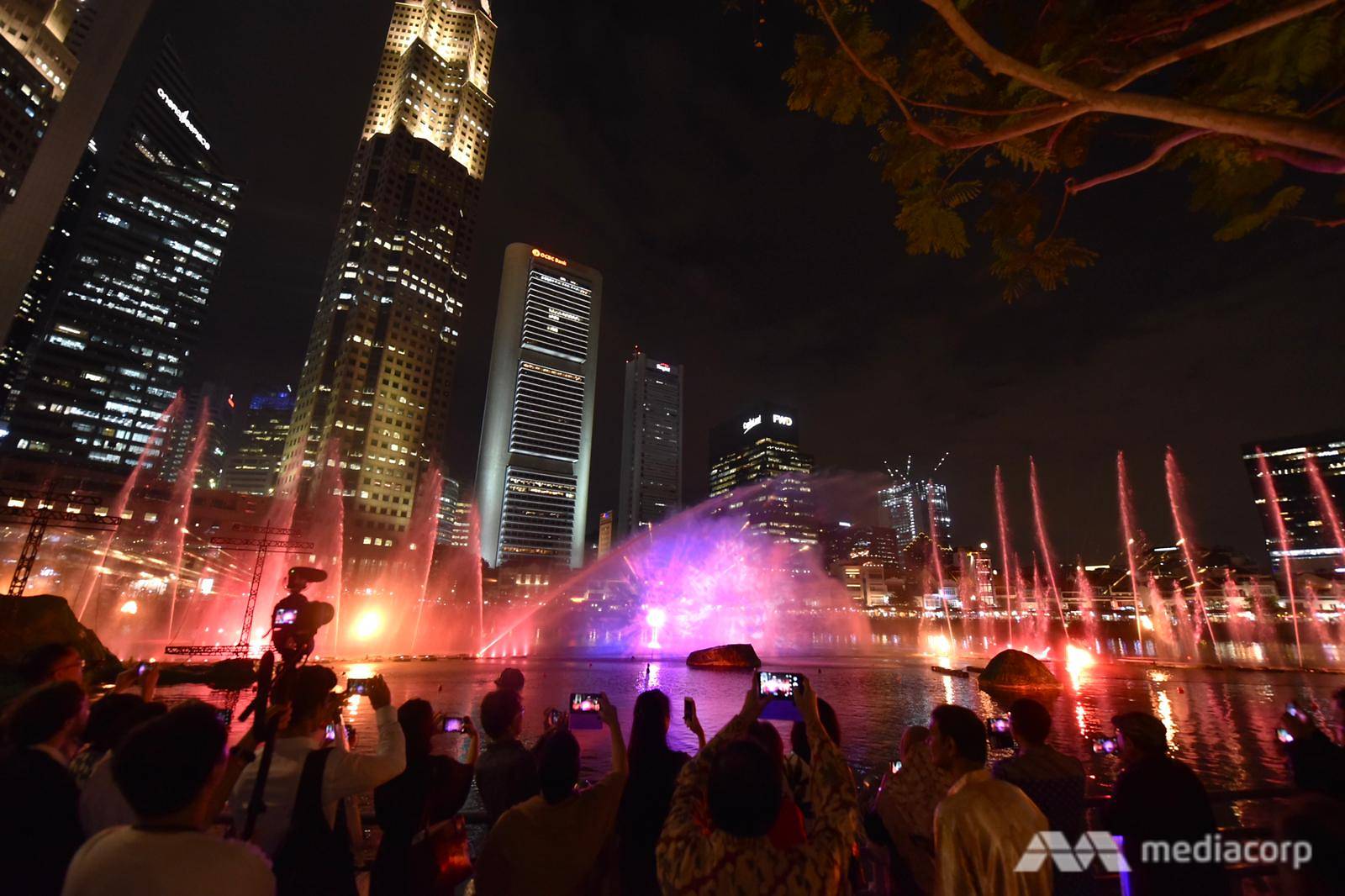
View of an i Light display at the launch of the Singapore Bicentennial. (Photo: Jeremy Long)
